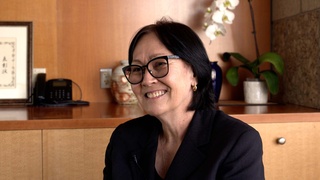Interviews
Experimented using portable video systems with kids
I began exploring interactive. Interactive meaning using the Akai and the Sony portable systems for what we would consider as video letters. And, who would want to participate? No adult wants to, no teachers, it was too risky. But second graders, third graders, would be interested… excited because no one’s going to say “No” to them.
I had colleagues in Irvine in California and in Los Angeles, either colleagues or students, my students, who approached the elementary schools to see if they would allow this kind of experiment...exchange of visual and oral information between children. So we did that from Westwood, Watts, other places in LA to Japan, to Tel Aviv, to France, to Sri Lanka, to all kinds of worldwide...because...Of course, they had no equipment yet. This is all still very early stage. So, it was a very exciting period because basically it meant that children were the ones that were leading the way.
Date: September 15, 2017
Location: California, US
Interviewer: Jennifer Cool
Contributed by: Jennifer Cool, Matthew Purifoy








